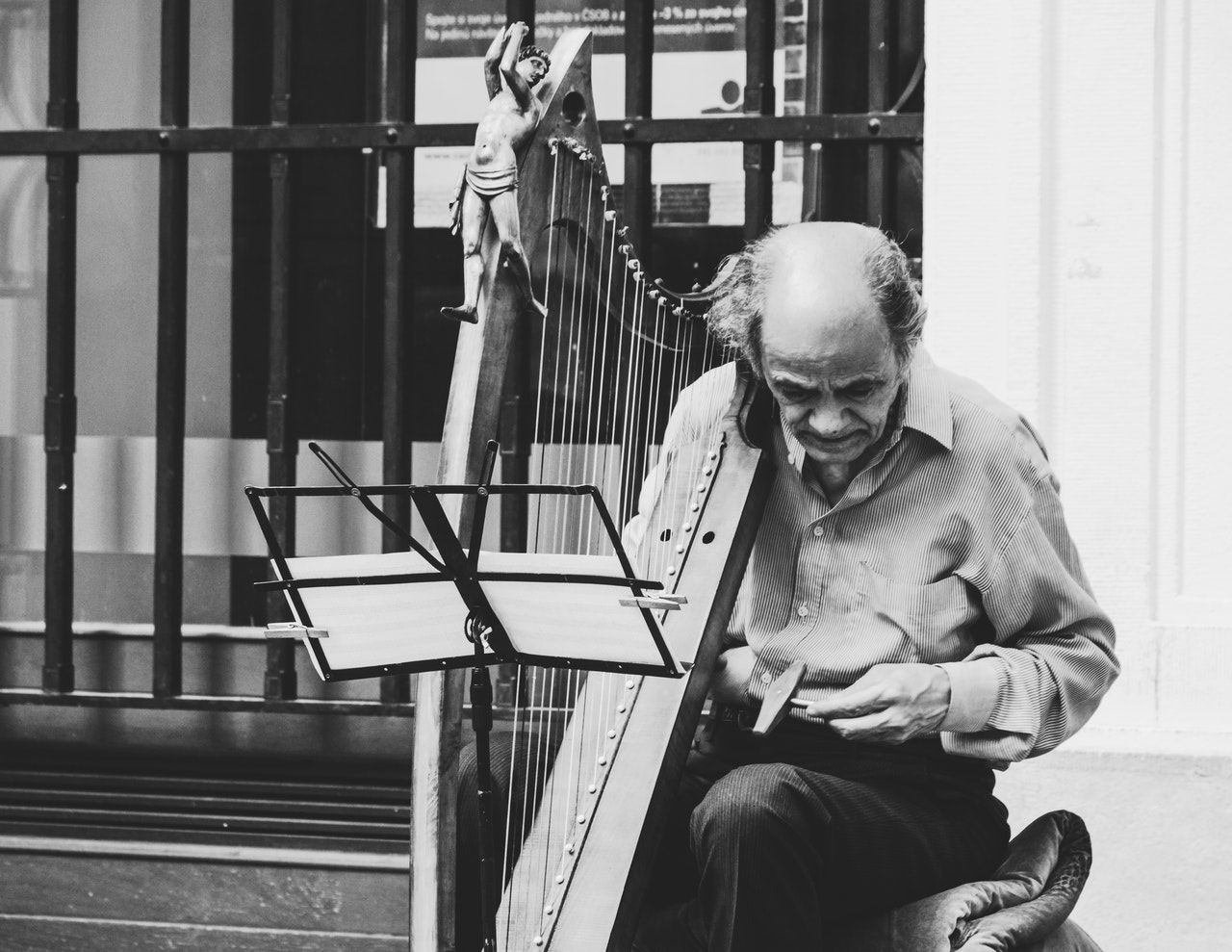The harp is a fascinating musical instrument, mentioned in many historical sources and pictured in the walls of temples and tombs throughout the world. A harp’s strings are attached to a soundboard, which acts as a resonating chamber. These strings vibrate when plucked or struck to create beautiful harp music that relaxes both the mind and soul.
Other than those basic facts, there are many more hearty harp details you didn’t know until today. Keep reading to learn more about them!
Its Form Has Changed Throughout Generations
In Ancient Egypt, harps looked like bows with a few strings played while standing. These bowed harps could be found in the tomb of Pharaoh Ramesses the Third, who ruled the country over 2,600 years ago.
In Asia, ancient harps were also angular and lacked pillars to support the instrument’s strings. It was common practice to play an Asian harp upside down, compared to how we play diatonic harps today. Ancient Chinese harps were also used in Korea and Japan and evolved into the yayla and jinghu.
The Irish harp, or diatonic harp, was created for stringed accompaniment and had about 24 strings fastened to a soundboard with wooden pegs for tensioning. This evolved into the chromatic harp, which contained about 34 strings and had tuning pegs located in the back of the soundboard.
It’s Been Adapted in Several Cultures
The harp evolved in the region near modern Iraq and Iran, probably from an ancient ancestor called the chang. The chang was standard in what was Persia until the 19th century. During this period, the harp evolved from a handheld instrument to a larger one that could be played while sitting or standing.
In South Asia, the veena, an ancestor of the harp, was shown in art as early as 500 B.C., although the remains of an older one were discovered in Scotland.
In Europe, the lyre, a close European relative of the harp mentioned in ancient Greek writings, dates back to 1,400 B.C.
Despite its cultural adaptations, this instrument consistently produced beautiful harp music wherever it was acclimated.
It’s One of the World’s Oldest Instruments
The harp is one of the oldest musical instruments in human civilization. It can be found in ancient burial sites dating back to 3,500 B.C. in Mesopotamia or Babylon, known as modern-day Iraq.
Ancient Egyptian art depicting harps can be found throughout the same period in temples and tombs, such as Abydos. These records mean the harp is older than 3,500 years since Egyptian culture was established in 3,100 B.C.
King David, a Biblical figure, is probably the most famous harpist in history. He composed psalms (beautiful harp music for his people) with the instrument and may have had a hand in designing the modern harp, although scholars disagree on that point.
Modern Harps Come in Various Shapes and Sizes
The three main types of modern harps are the lever, pedal, and Celtic variations.
- The lever harp is diatonic and contains levers that raise the string by a semitone. Novice musicians prefer these because they are easier to play.
Folk musicians often prefer a lever harp, but they can also play classical music.
- The pedal harp is chromatic and has pedals that raise the string by two semitones. This is useful for playing more complex classical music because it can reach higher notes than a lever harp.
- Other less common types include the Celtic, Latin American, and guitar harp.
Soothe Your Troubles Away with Beautiful Harp Music
It’s said that the harp calms the heart, as it can provide a peaceful and relaxing environment where you can forget about the troubles of your day. It’s no wonder it’s an instrument adapted into several cultures since ancient times. If you love classical music and want to learn to play the harp, now’s your chance.
The Internet is full of information and resources to help you. You just need to find the right one, like Prayer Pray! Listen to our instrumentals featuring the violin, cello, piano, and beautiful harp music that will remind you of heavenly instrumentals. Visit our website for links to download these divine compositions.




